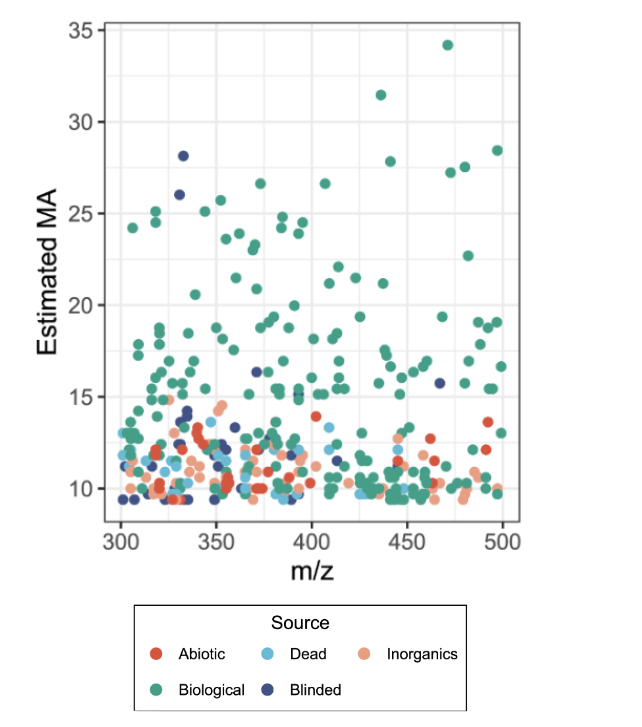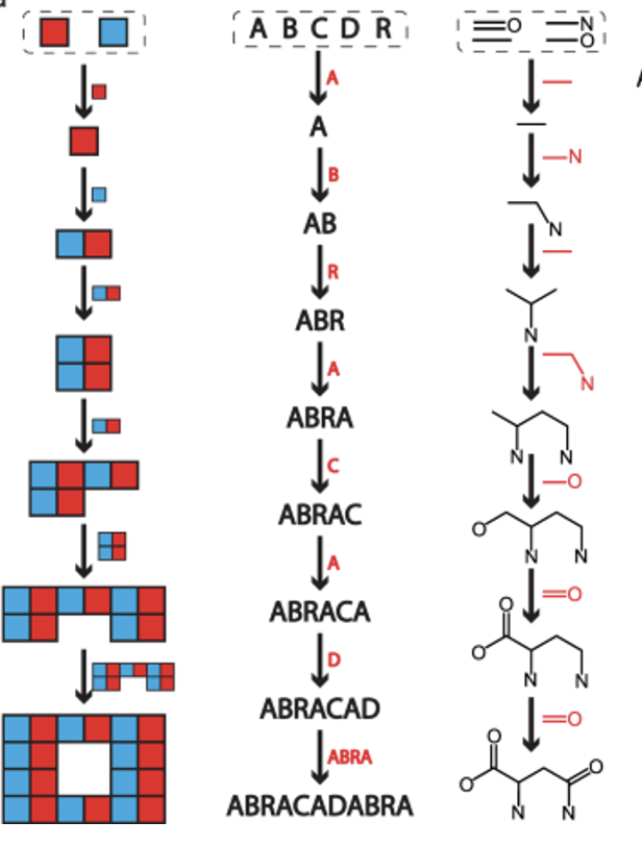Biologists usually define 'life' as an entity that reproduces, responds to its environment, metabolizes chemicals, consumes energy, and grows. Under this model, 'life' is a binary state; something is either alive or not.
This definition works reasonably well on planet Earth, with viruses being one notable exception. But if life is elsewhere in the universe, it may not be made of the same stuff as us. It might not look, move, or communicate like we do. How, then, will we identify it as life?
Arizona State University astrobiologist Sara Walker and University of Glasgow chemist Lee Cronin think they've found a way.
They argue that chance alone cannot consistently produce the highly complex molecules found in all living creatures.
To produce billions of copies of intricate objects like proteins, human hands, or iPhones, the universe needs a 'memory' and a way of creating and reproducing complex information – a process that sounds very much like 'life'.
"An electron can be made anywhere in the universe and has no history," Walker told New Scientist.
"You are also a fundamental object, but with a lot of historical dependency. You might want to cite your age counting back to when you were born, but parts of you are billions of years older.
"From this perspective, we should think of ourselves as lineages of propagating information that temporarily finds itself aggregated in an individual."
Walker and Cronin's 'assembly theory' predicts that molecules produced by biological processes must be more complex than those produced by non-biological processes.
To test this prediction, their team analyzed a range of organic and inorganic compounds from around the world and outer space, including E. coli bacteria, yeast, urine, seawater, meteorites, drugs, home-brewed beer, and Scottish whisky.
They smashed the compounds into pieces and used mass spectrometry to identify their molecular building blocks.
They calculated the smallest number of steps required to reassemble each compound from these blocks – which they called the 'molecular assembly index'.

The only compounds with 15 or more assembly steps came from living systems or technological processes.
"This could be a cell that constructs high-assembly molecules like proteins, or a chemist that makes molecules with an even higher assembly value, such as the anti- cancer drug Taxol," explain Walker and Cronin.
While some compounds from living systems had less than 15 assembly steps, no inorganic compounds made it above this threshold.
"Our system … allows us to search the universe agnostically for evidence of what life does rather than attempting to define what life is," Walker, Cronin, and others wrote in a 2021 Nature Communications article.

The beauty of the assembly index is that it does not require that aliens be made of the same carbon-based organic materials as creatures that live on Earth to be identified.
The assembly index is also indifferent to whether alien life is just starting to emerge or has moved into a technological stage beyond our comprehension. All these states produce complex molecules that could not have occurred without a living system.
Walker and Cronin's team is now applying the idea of an assembly index of 15 to future NASA missions.
In the mid-2030s, NASA's Dragonfly will fly through Titan's thick atmosphere of nitrogen and methane, moving from one site to another.
Saturn's moon Titan is the only place in the Solar System other than Earth to have standing bodies of liquid. It has liquid hydrocarbon lakes on its surface and is thought to harbor liquid water underground.
The robotic rotorcraft will drill into the icy surface at each landing site and extract a less-than-1-gram-in-size sample. This sample will be blasted with an onboard laser, which will break apart larger molecules so that the rock's chemical composition can be analyzed.
"It's a good example of the advantage of taking a more general approach to what life is because Titan is very different to Earth," says Walker.
"We don't expect anything like Earth life to evolve or live in this environment, so if we want to find out if life is on Titan, we need an agnostic technique.
"My group is now working on determining how we might be able to detect high assembly molecules. We're working with NASA to ensure that their existing mass spectrometry instrumentation has high enough resolution to detect high assembly molecules."
